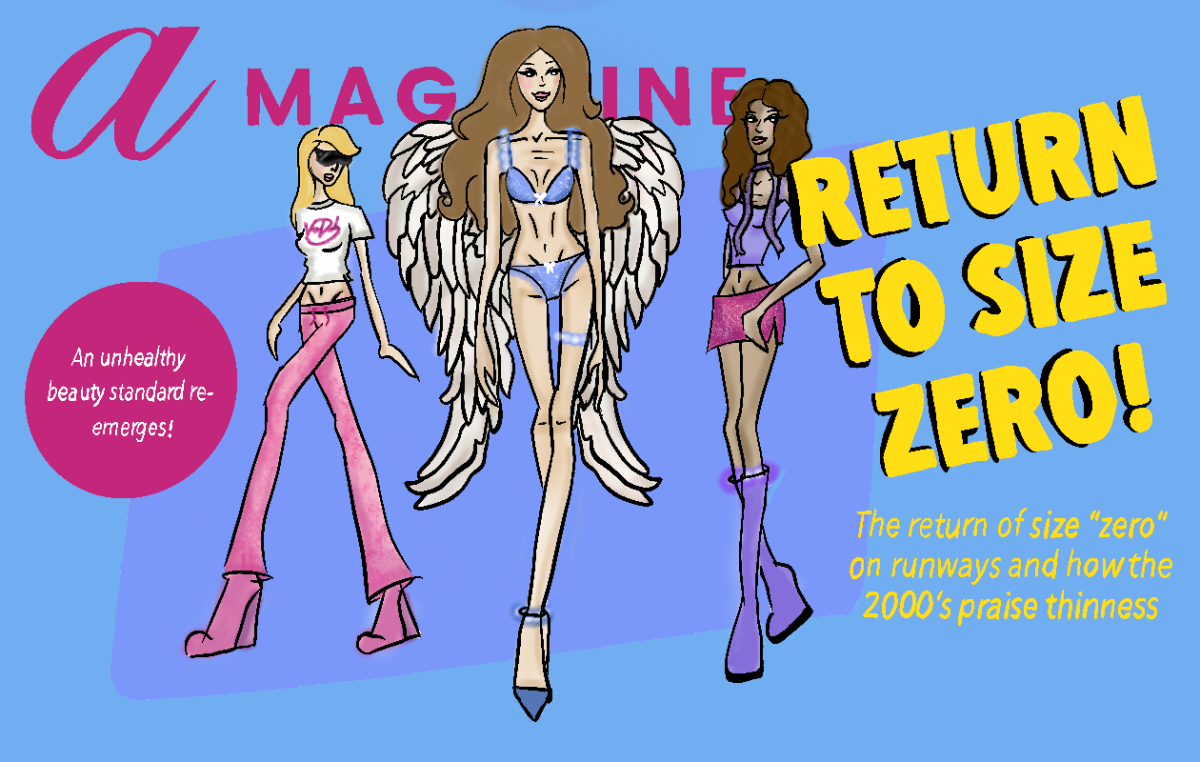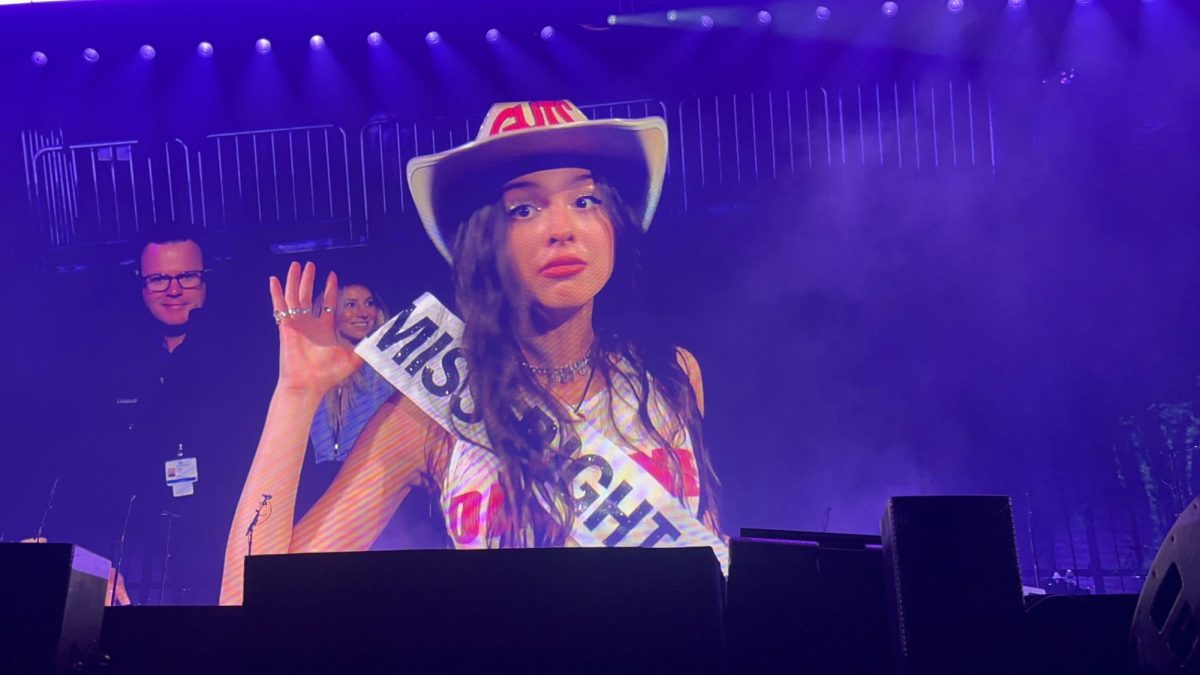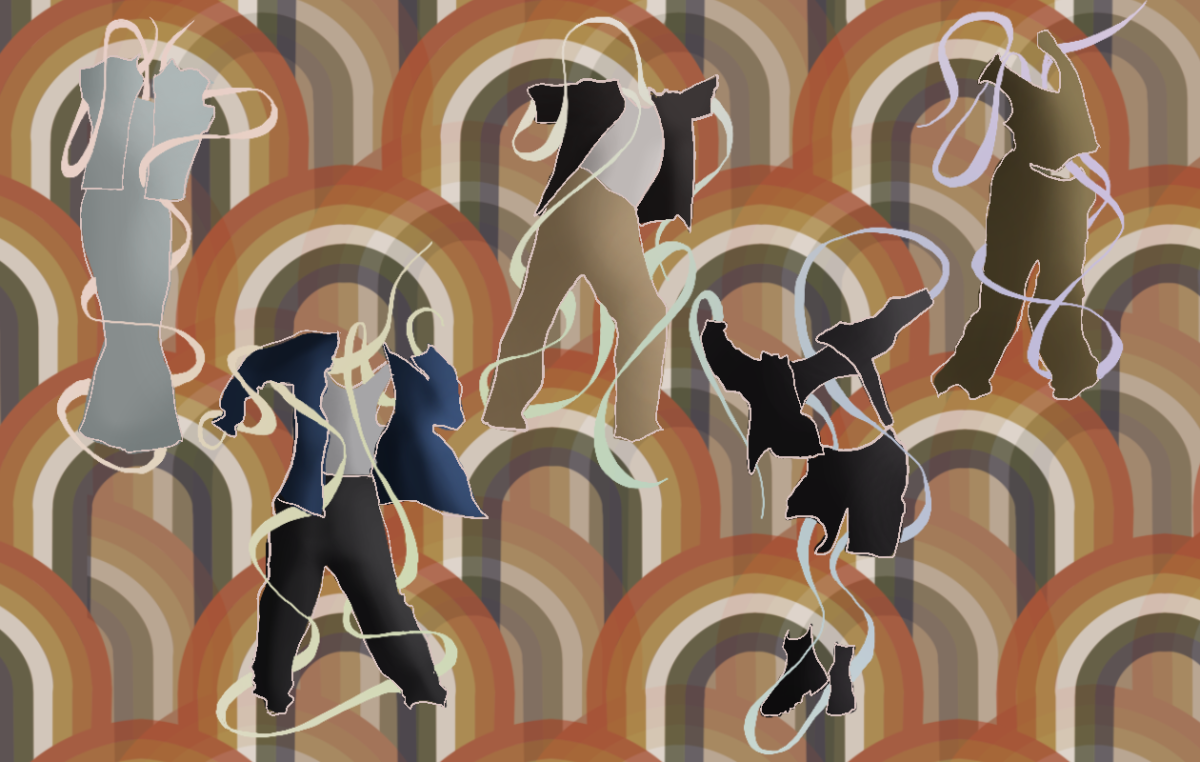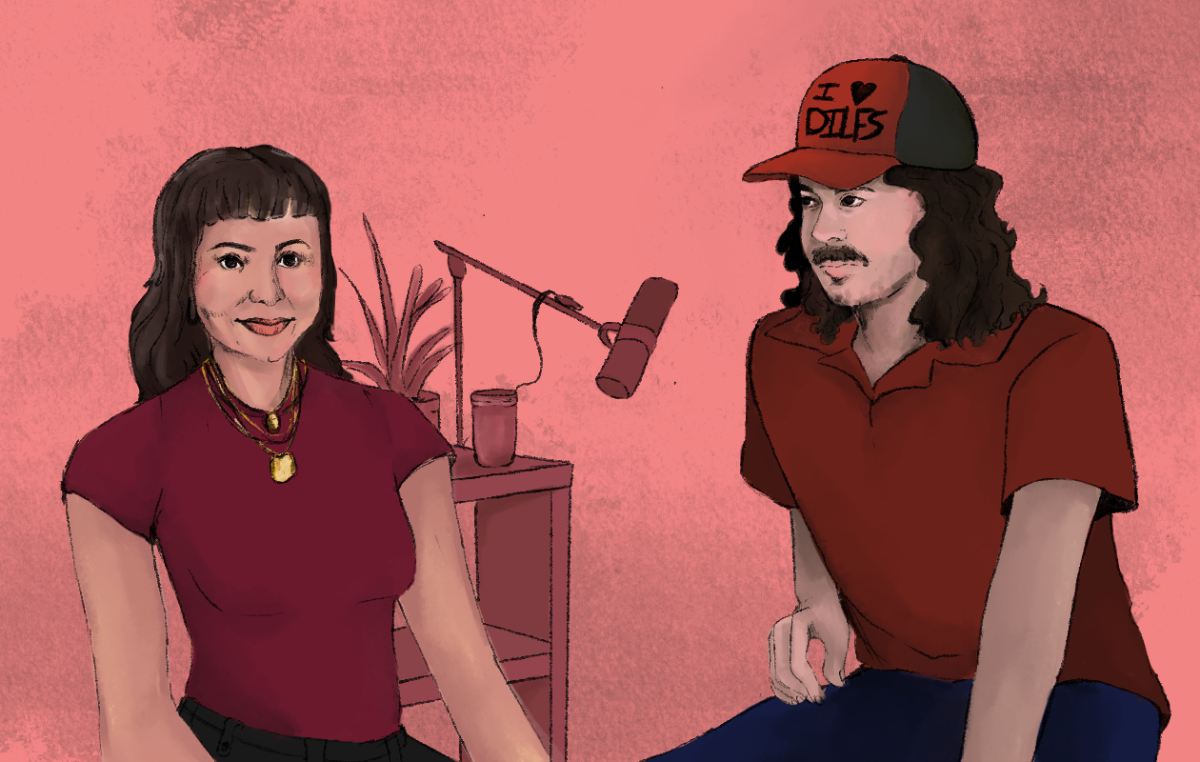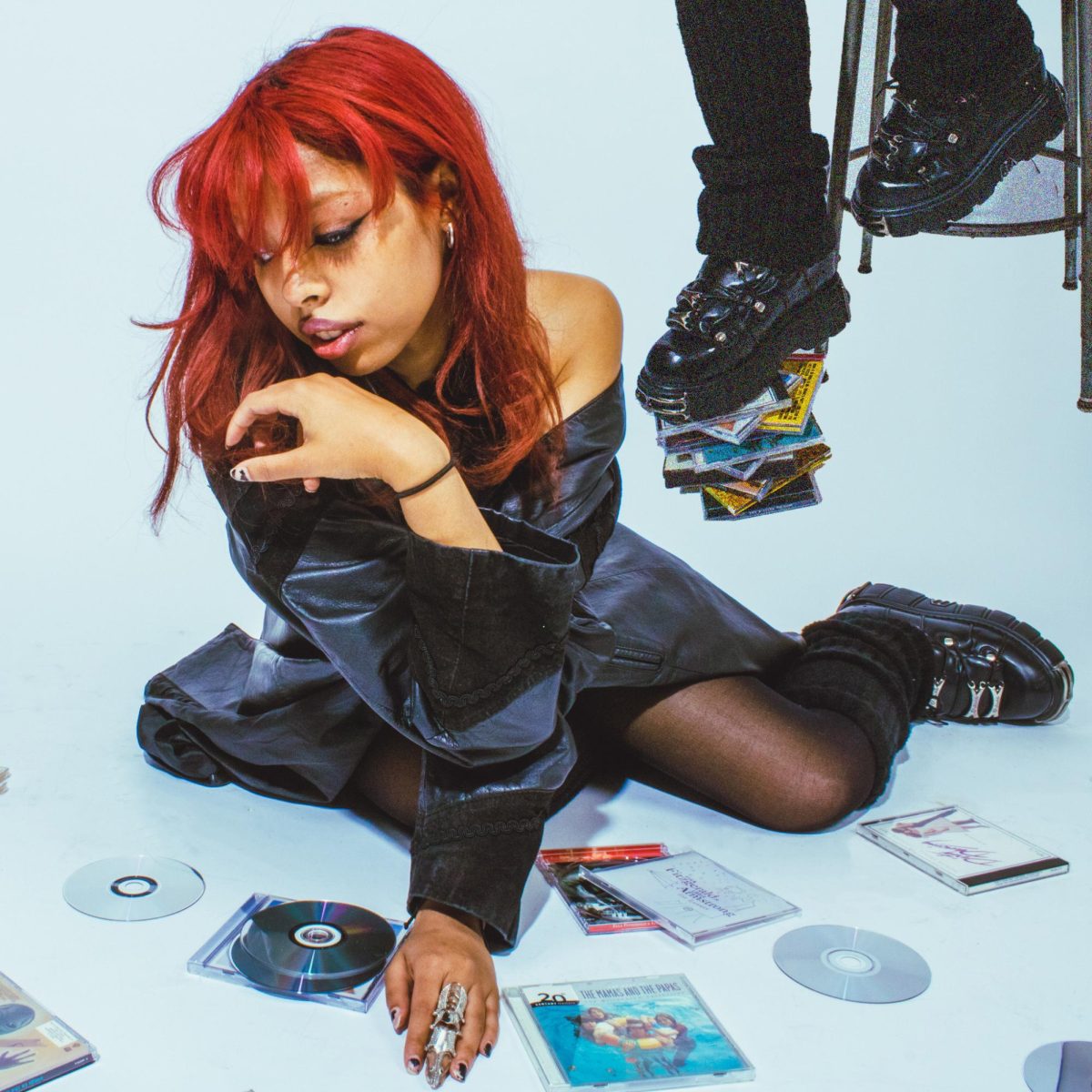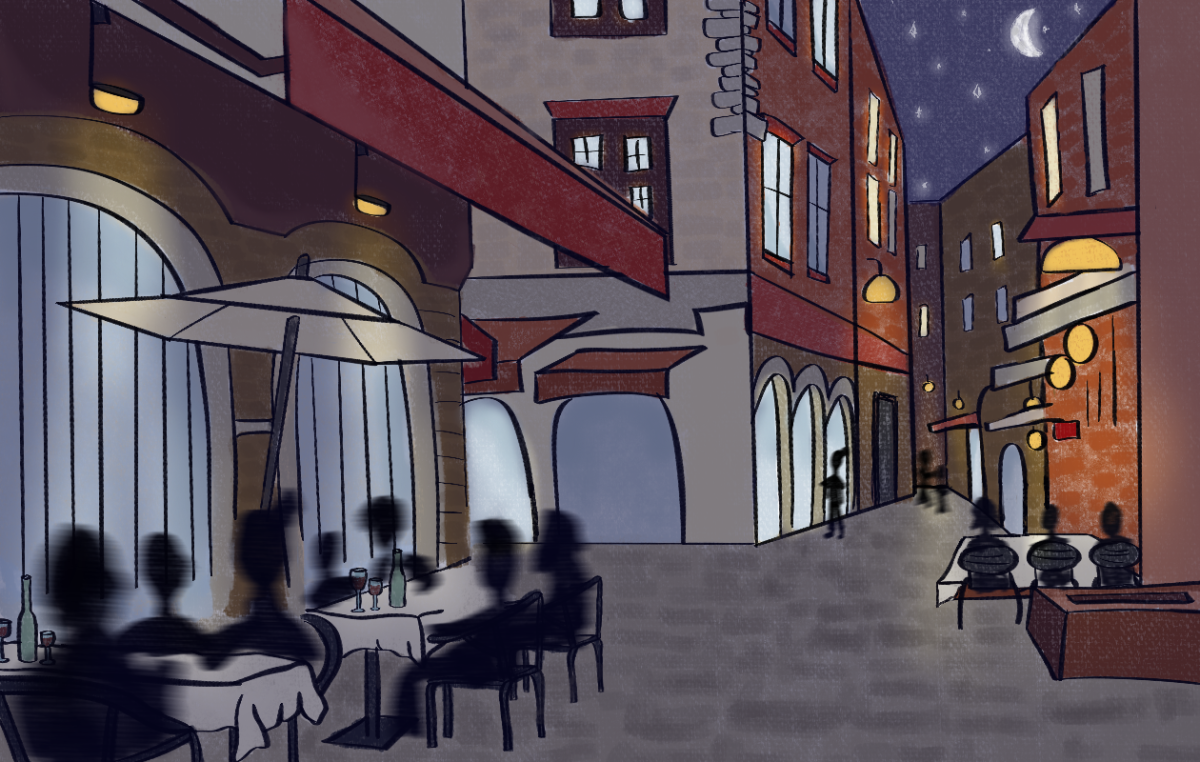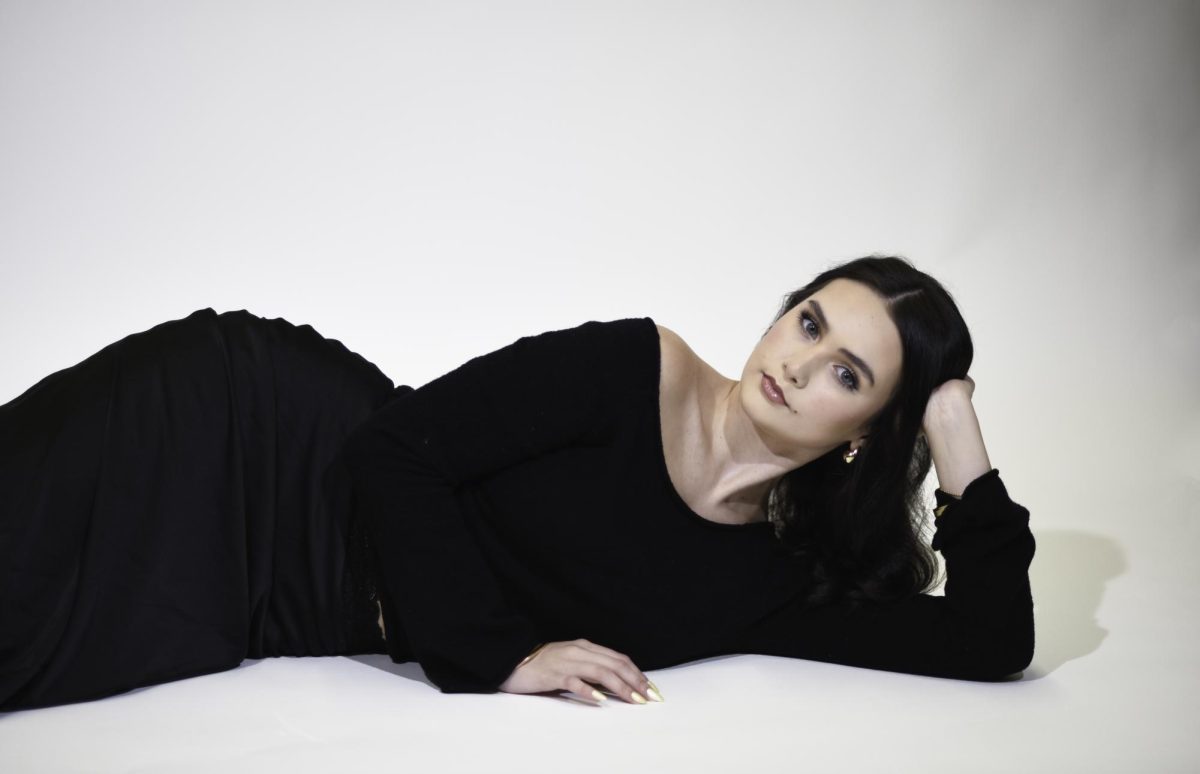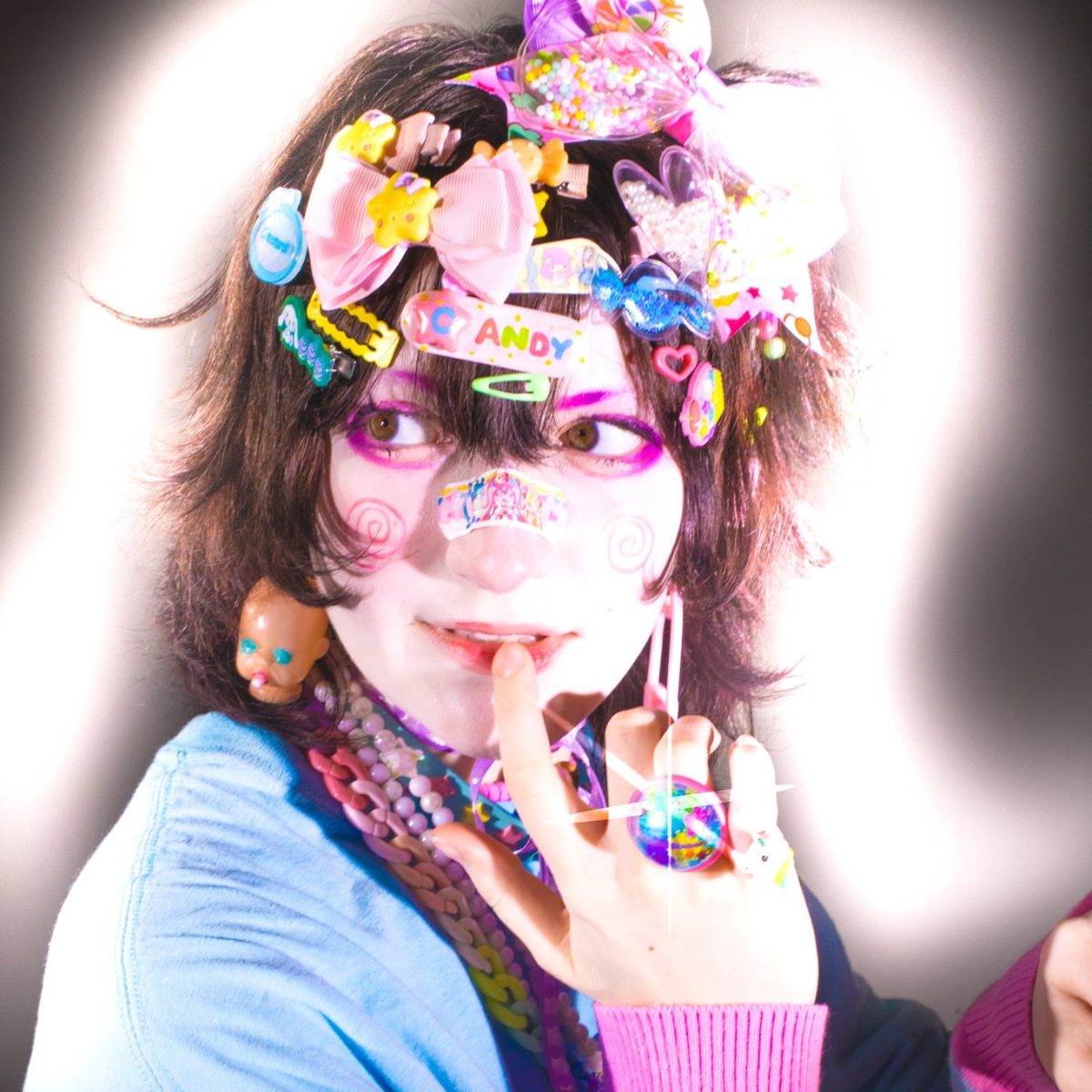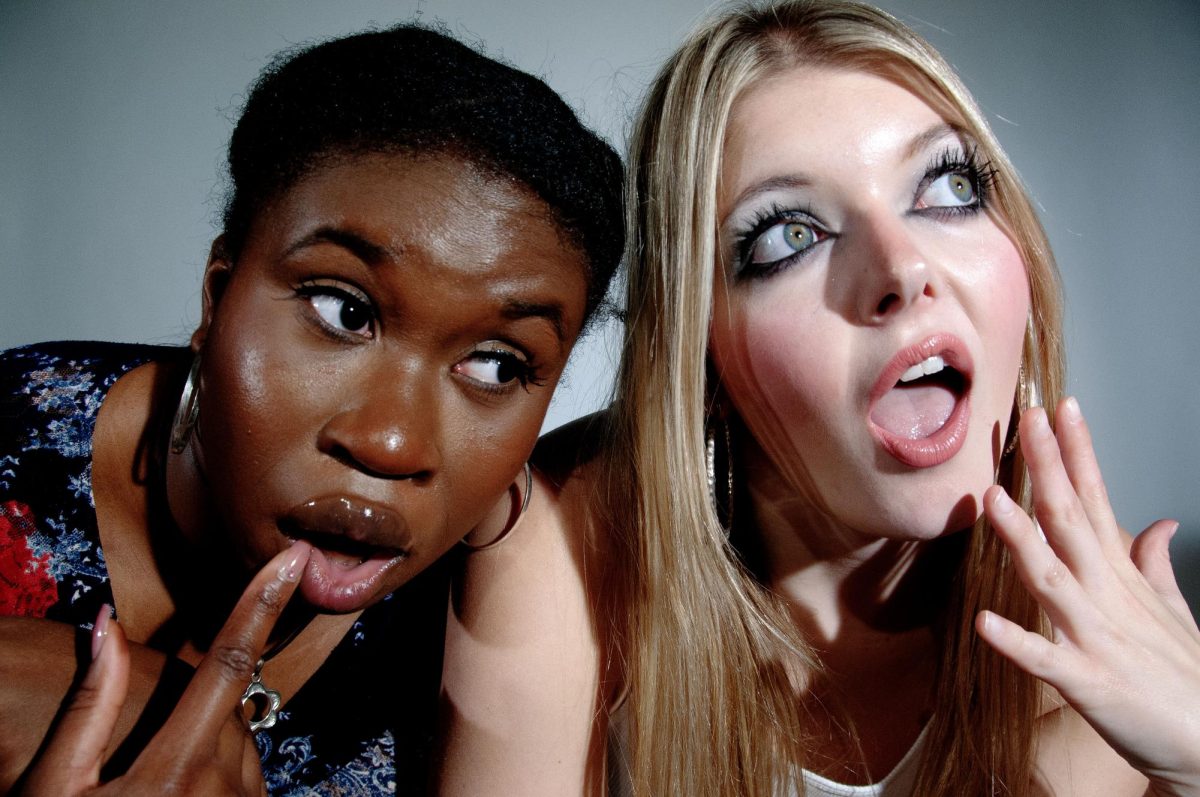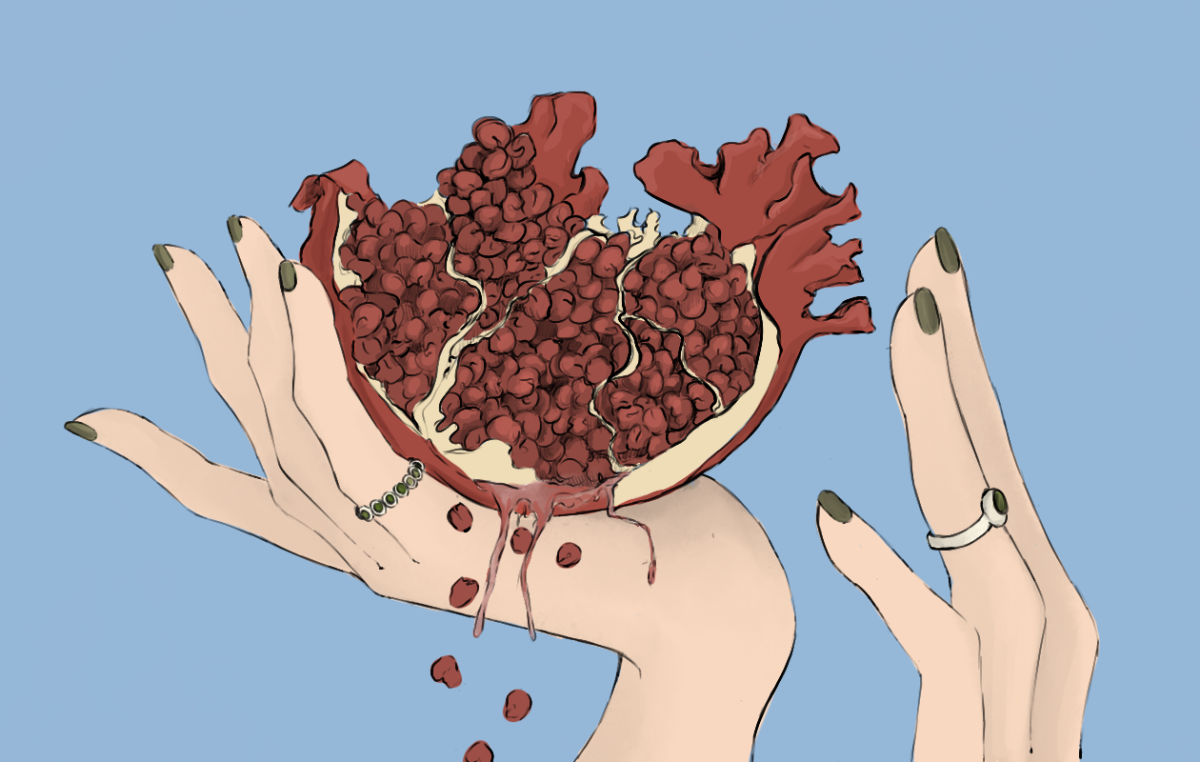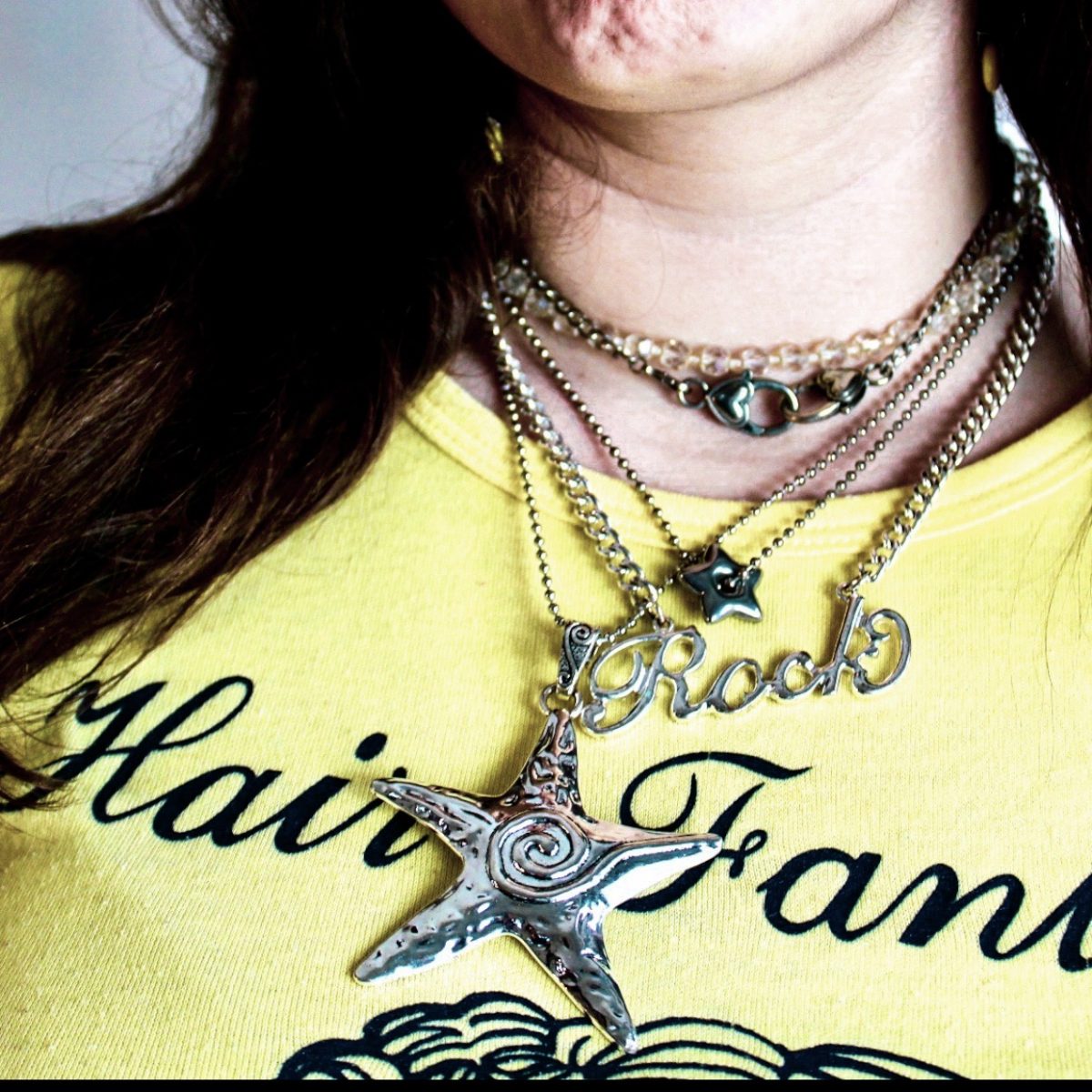I remember watching the Victoria’s Secret Fashion Show as a kid, and seeing what were considered the “prettiest women on Earth.” From Gisele to Candice to Adriana, they all shared something in common: they were super thin. Even when Victoria’s Secret tried to promote inclusivity by adding black and Asian models to their shows, they were still super slim. As a result, the idea that I needed to be skinny was constantly hammered into my brain, and I was certainly not the only one impacted by skinny culture.
Emma Reichlin, a Junior Fashion Merchandising major, says, “I personally have seen, especially in that era of really, really skinny models, that everyone wanted to be a skinny model. I saw and knew a lot of friends who had eating disorders and sort of influenced me,” she adds.
We would look at the magazines, scroll on social media or turn on the TV and see women like Paris Hilton and Lindsay Lohan. We weren’t seeing women bigger than a size zero. We grew up in a time period where skinny was the only option.
Hannah Shirey, a Senior Fashion Merchandising major, says, “It was always nagging on the back of my mind. ‘Oh, I should look like that but I don’t. Why don’t I look like that?’”
As I grew older, I started to realize how unattainable these “body goals” were. Brands like Victoria’s Secret were selling these ideal body types when they were not even real. A photoshopper for VS told Refinery 29 that “you always start out just learning how to adjust things, just for photography in general,” she explains. “That is really what retouching is essentially about, and should be about.” But then someone thought that since “You can manipulate the background, so why not manipulate the body? And then this thing just spiraled out of control.”
Cosmopolitan also published,“The 10 Most Insane Victoria’s Secret Photoshop Fails of All Time” to highlight how even the bodies we look up to and wish we had, aren’t even real.
Shirey adds, “Even those girls who look like that, don’t actually look like that. It is such an unrealistic image… how do you think you’re gonna look like that?”
Even the bodies that were not achieved through plastic surgery or Photoshop, are usually obtained by risking one’s health. Emily Ratajkowski, a famous model and actress who is now part of the Victoria’s Secret comeback, shared in her book, “My Body” that she used to skip meals and smoke cigarettes to maintain a tiny waist. Yet, few models disclose what they do to attain their bodies, leaving countless girls susceptible to eating disorders and body dysmorphia.
Reichlin added, “To see Instagram models and their photoshopped pictures, it just gave me such unrealistic expectations as a young girl. Especially with social media too, it 100% had a big effect on me as a young girl who grew up in the era that social media started.”
On the topic of the Victoria’s Secret fashion show comeback, the company took a 4-year hiatus amid many controversies, including body image issues, comments against transgender rights and plus-size models by its former Chief Marketing Officer, Edward Razek. He was also accused of bullying and harassment. In 2021, the brand announced The VS Collective, a new platform committed to inclusivity that would shape the future of the brand and would have nothing to do with the famous “angels” but rather a more diverse group of women. In 2022, they are “going to continue to lean into the marketing spend to invest in the business, both at top-of-funnel and also to support the new version of our fashion show, which is to come later this year,” said the Chief Financial Officer, Timothy Johnson. Still, many consumers are skeptical about their commitment to diversity and whether or not it’s just a PR stunt.
Shirey adds, “I definitely think that there are some people high up in that company that are like ‘Okay guys, we really need to make a change, we see how we’re negatively impacting all these young girls’ but I also feel like the beauty standards are so deeply rooted in that company that it is kind of impossible to remove themselves from that,” she mentions. “Especially because they still have their original models and they did have plus size models, who were just normal-looking women. So, it is kind of good but I do feel it is kind of performative.”
Still, we thought size 0 and the damaging effects of skinny culture were disappearing. We hoped we could leave it all in the past and embrace body inclusivity. Unfortunately, size 0 is back in style. Its popularity is probably triggered by the Y2K aesthetic and the return of mini skirts, low-rise jeans, tube tops and many other fashion trends from that time.
Reichlin vocalized, “I love the styles of Y2K. But why can’t we adhere to this old style from the 2000s with nowadays expectations? Why does it have to be the ‘skinny’ coming along with that trend?”
Emily Gordon-Smith, director of consumer products at trend forecasting company, Stylus, said back in 2021 that even designers were embracing this trend for Spring/Summer 2022 and that consumers could expect, “Clueless-inspired cutesy skirt suits, low-rise jeans and mini skirts, cropped tops, and baby tees.” Still, we haven’t seen many plus-size or mid-size women walking the runway when it comes to Y2K fashion, and if we only see super skinny women wearing low-rise jeans, it becomes a trend for only those who wear size zero. Shirey commented, “Personally I see low-rise jeans and I’m like ‘Oh my god, I could never do that’ because I’m not super skinny.”
Even now, two years later, we still have a fascination with this aesthetic. Shirey asks, “Especially with Y2K trending again, people are talking about heroin chic again. So, obviously, people still want to look like this and bring this back. We think we’ve made big moves, but have we?”
Even the Kardashians, who are known for a curvier body type, are slimming down. Not that they were ever a prime example of healthy beauty standards, but they heavily influenced what society deemed as a “beautiful body.” Turning to extreme methods, they influenced diet culture and normalized plastic surgeries to attain an unrealistic body type. If the ones who coined a new beauty standard are going back on their word, then it means we’ll never be satisfied with our bodies because we see our bodies as a trend, not a true version of ourselves.
The diet culture is another influence on the cult of thinness. It tells us how to eat, work out and look and that we will be more loved and accepted if we are skinny. It is more dangerous for young and impressionable consumers who may not be able to discern how dangerous following a diet or a workout without professional support can be.
Reichlin says, “In the diet culture, which I know I struggled with, you see the models and ‘what they eat in a day’ and it is not healthy. I was majorly influenced when I was younger and in high school. I did a juice cleanse for four days and drank only juice. It’s crazy to think that that was something I thought was good for me.”
The ‘fit-influencers,’ known for sharing their workout routines and daily meals don’t consider how they may be impacting young viewers and triggering eating disorders when genetics plays a huge role in how our body looks. We could all eat the same food and work out the same way but still have different bodies. In a perfect world, we would be able to be ourselves and have the bodies we have without having to constantly alter them to fit in.
After transitioning between super skinny to curvier body types and back again, it leaves me wondering if we have evolved and become more body-positive, or if it is all just fake. Shirey says “I want to say that it is better now because we have body positivity influencers and we see brands making moves to be more inclusive, but some brands are still using extremely thin women and would never even think to use anybody that is not a size zero.”
It is not enough to be inclusive on the runways when the racks lack larger sizes. If most women can’t wear what is shown on the runway, that isn’t true inclusivity. Photoshopping and face-tuning need to stop, as they depict unrealistic beauty standards and remain problematic for impressionable teenagers. “Besides, we as consumers can help the body positivity movement too by teaching the newer generations that we need to be inclusive and diverse,” adds Reichlin. She says “It has definitely been a change since I’ve been a little girl, but it is just not enough.” After all, what is so wrong with real bodies?
Support Student Media
Hi! I’m Annie Gleydura, A Magazine’s editor-in-chief. My staff and I are committed to bringing you the most important and entertaining news from the realms of fashion, beauty and culture. We are full-time students and hard-working journalists. While we get support from the student media fee and earned revenue such as advertising, both of those continue to decline. Your generous gift of any amount will help enhance our student experience as we grow into working professionals. Please go here to donate to A Magazine.

